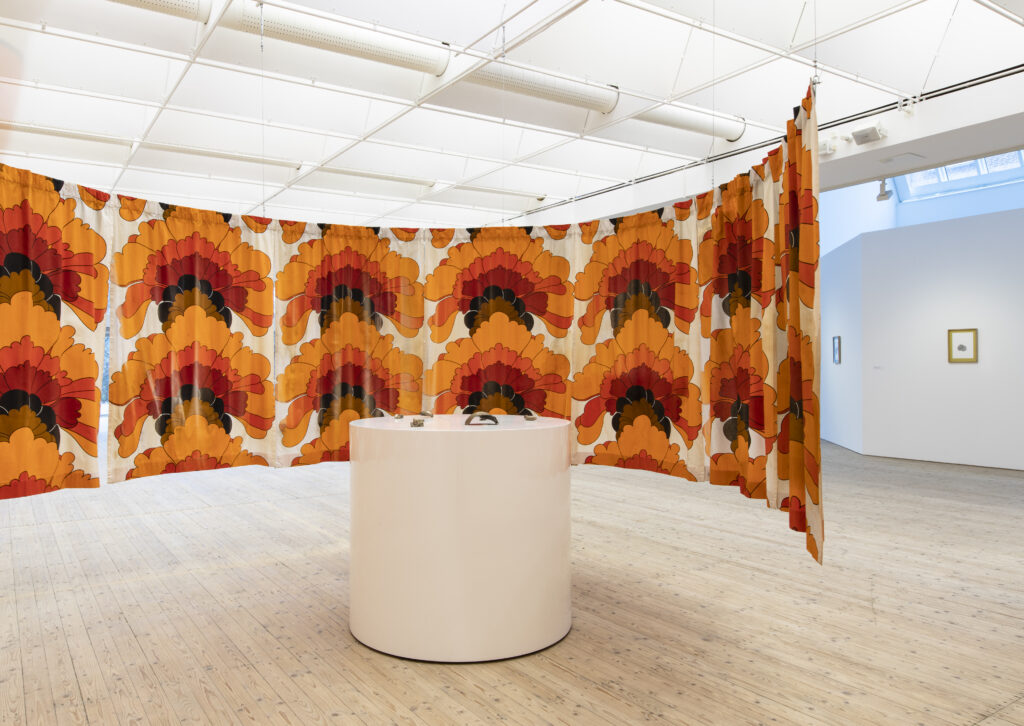
Ann Böttcher – Works 2000–2021
4.12 2021 – 27.2 2022
Ann Böttcher (born 1973) is based in Malmö and has received a lot of recognition for her meticulously executed pencil drawings. Other techniques she works with include collage, weaving, and installations. For many years, Böttcher has taken an interest in how identity is formed – culturally, nationally, and historically. Her works often point to the connections between the past and the present, between our common, shared history and our individual, personal one. This retrospective exhibition, “Works 2000–21”, presents the full range of her oeuvre, from her intimate pencil drawings to her more sculptural works, which she often executes in a larger scale.
Nature grows from the paper
In Böttcher’s detailed pencil drawings, nature is allowed to grow, slowly, on the surface of the paper. The effort, concentration, and time that is put into depicting the motif seem encapsulated into the drawing itself. Böttcher first rose to fame in the early 2000s thanks to her fascinating portraits of trees – often spruces – over a white backdrop. These pencil drawings were created as a sort of pauses while she was a student at Konstfack in Stockholm – pauses from the art. They became a way of trying to return, mentally, to the forests of her childhood; another way of achieving the mental state of being in nature. Ann Böttcher grew up in Bruzaholm in the north of Småland.
A political, ideological, and cultural perspective on nature
These beautiful and aesthetic pencil drawings are also a part of her ongoing explorations of how nature is used for ideological, political, or cultural purposes. In her work “The Sweden Series (a Selection)”, she examines the history of the spruce tree in Sweden over the last four centuries. She gives a chronological presentation of facts, texts, and images that she’s found in various archives, which all touch on how the spruce has been presented and viewed, including our romanticised and ideological projections. Here, we encounter Carl Gustaf Ehrensvärd (1745–1800), who harboured such a violent hatred for the spruce, or romantic nationalism as exemplified by painters like Marcus Larson, but also facts about the past role of the spruce in funerals, or the belief in the tree’s supposed healing powers.
The curators are Theodor Ringborg and Mats Stjernstedt. An earlier version of the exhibition was displayed at Bonniers Konsthall in Stockholm from February 3 to May 23, 2021. The exhibition at Malmö Konsthall includes more works, including a newly produced one.
Böttcher infuses a whole spectrum of emotions into both installations and drawings. This makes the exhibition utterly overwhelming; it’s impossible to tear oneself away.
Thomas Millroth, Sydsvenskan
Similarly, in her series “Der Umgang mit Mutter Grün”, Böttcher has charted how the forest and the spruce were used in German National Socialist propaganda during the 1920s and 30s. In her installation Ode to Pine (For Long and Faithful Service), she investigates the cultural and political role of the pine tree in the history of China.
Her installation “Vater (die Oder-Neiße-Linie)” from 2021 is her most personal work to date, and addresses her own German background, her father’s history, and his memories. Her father had to escape with his family after the Second World War, when the borders were redrawn, and their home suddenly ended up in Poland. This was a fate they shared with many other German families.
Böttcher made her first textile work in 2006/8, and since then, she has worked with traditional craft techniques like embroidery, weaving, and crochet, sometimes in collaboration with Handarbetets Vänner Ateljé (Friends of Handicraft Studio). These techniques involve similar rhythms and concentration levels as drawing; they emphasise repetition and meditation. In her abstract, textile works, Böttcher has felt able to work more intuitively, more freely – and this includes her approach to colours and their various energies. One of her textile works, “The Journey and the Harbour (Återbrukerskan)”, which is featured prominently in the exhibition, usually hangs in the auditorium of the Vipan secondary school in Lund. The title and the execution of the piece both allude to the days when the present-day school building was part of the Vipeholm hospital for persons with developmental disabilities (1935–82).
For the exhibition at Malmö Konsthall, she has created a new artwork based on Goethe’s colour wheel. It consists of rags that were left over from the production of “The Journey and the Harbour (Återbrukerskan)”, and which have been stored in the artist’s studio ever since.
Although Böttcher employs a variety of expressions and techniques, the works are all united by the fact that they address the same underlying issues. They become portraits of, or perhaps rather symbols of, the ways that identity, power, and ideology are formed and exercised in society.



